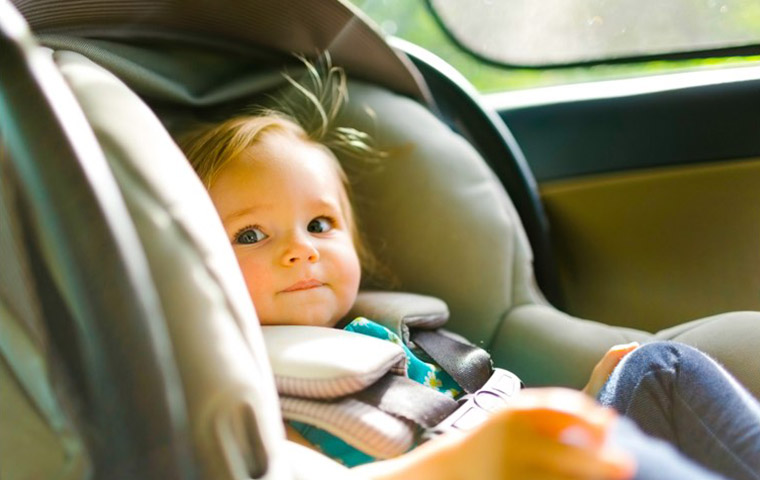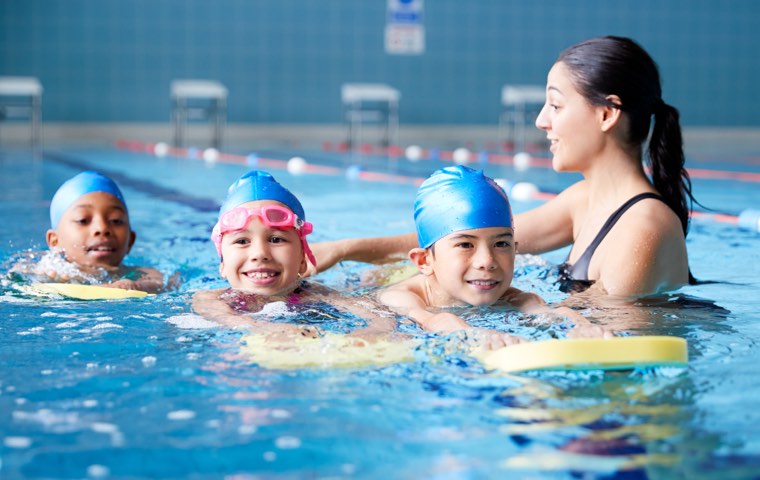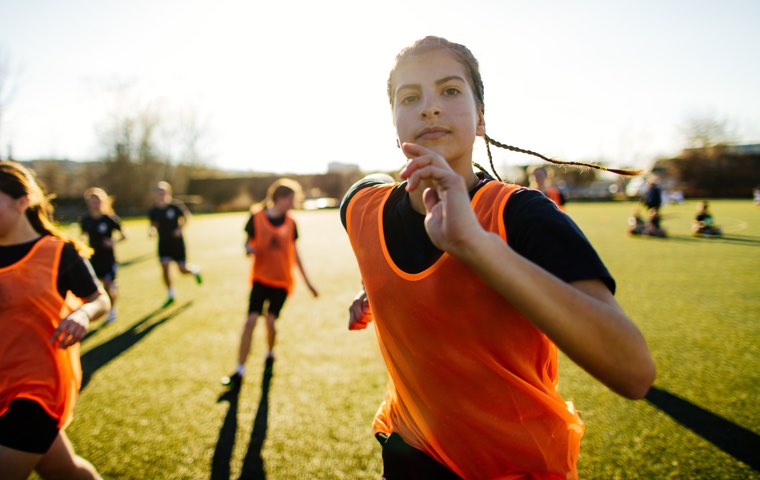Around the House Water Safety Tips
Teaching children the joys of splashing in the bathtub and sprinkler can be fun for both parents and kids. That said, even small amounts of standing water can be dangerous to infants and toddlers. Children ages 1 to 4 have the highest rates of drowning, and drowning dangers aren't just limited to recreational swimming areas like pools, lakes, and rivers. Drowning can happen in less than 2 inches of water, and when babies drown, it most commonly happens in bathtubs, buckets, and toilets. Drowning is silent and can happen in seconds.
As a parent, it's up to you to keep your eyes on your children when they are in or near water. Water safety for kids starts with paying attention to even the smallest amounts of water. Around the house, make sure any containers such as buckets, tubs, and kiddie pools are emptied as soon as you are finished using them. By learning to recognize common drowning dangers in and around your home, you can help keep all kids safe.
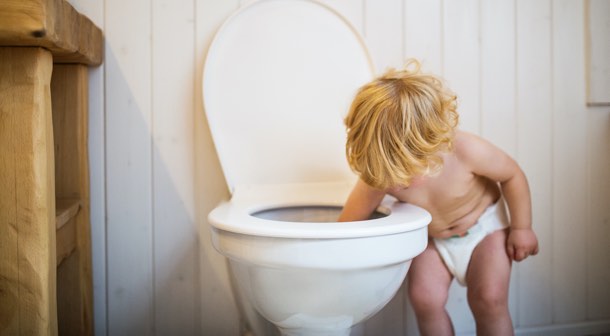
It doesn't hurt to be ready for emergencies - have a first-aid kit and emergency medical telephone numbers handy. If you can, take a class on water safety training and learn CPR.
Water Safety for Your Child
Bathroom Water Safety Tips for Parents
Bath time is part of many families' daily routines, but make sure you stay alert every time your child is in the tub. For bath time, the best water safety tip is to plan ahead. Gather everything you need before running the bath water, so it's all within easy reach. Don't forget a towel, soap, shampoo, tub toys, a clean diaper, and clean jammies. You don't ever want to leave a baby or young child alone in the bath to go get something you forgot. If you must leave the bathroom to answer the phone or the door, wrap your child in a towel and take him (or her) with you. In Texas, children - almost always infants - drown in bathtubs every year, so never leave a little one alone in the tub.
As your child starts to crawl, toddle, and walk, make sure to keep bathroom doors closed and toilet lids down. Safety locks on toilets can help provide an extra layer of protection for curious toddlers. It may seem strange, but Texas toddlers can and do drown in buckets and toilets.
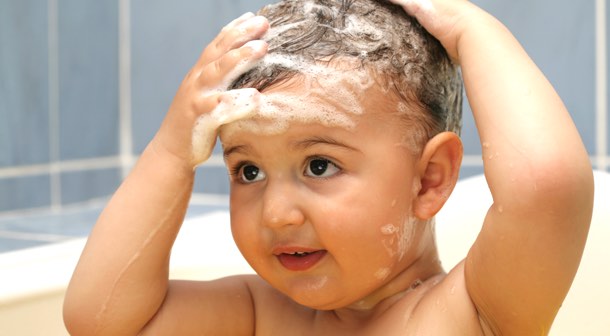
Need parenting help now?
The Texas Parent Helpline is available 24/7.
- Call 833-680-0611
- Chat with us
- Text 833-680-0611
Backyard Water Safety Tips
Never let kids play unattended around any backyard pond or pool, including a kiddie pool. Watching children around water is a big responsibility, and older children should never be in charge of watching younger children.
A responsible adult should actively supervise children anytime they are playing in or around swimming pools. It's easy to get distracted, but the designated "water watcher" should always stay focused on the child. So, no reading a book or looking at your phone when kids are in water if you are the water watcher. Also, any adult who is watching children around water should also be able to swim and/or rescue them if anything were to go wrong.
Finally, when playtime is over, make sure to empty kiddie pools and water toys such as sensory tables, then store them where they can't fill with rainwater.
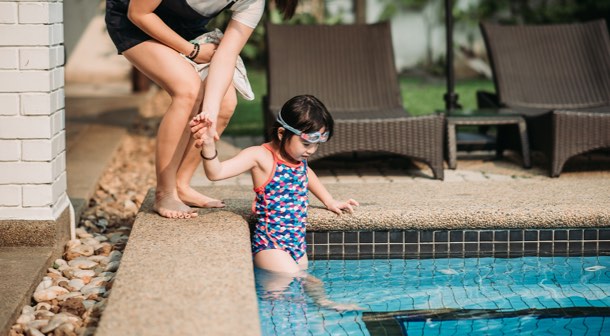
Home Pool Safety
Backyard pools, spas, and hot tubs can be fun, but it's important to make a pool safety plan to protect your own children and guests. Keep in mind that large inflatable pools can be just as dangerous as in-ground pools. Make sure these pools are emptied after each use or they have a locked fence around them.
Every year, emergency rooms treat about 6,400 pool and spa injuries in children younger than 15 years old. In 2019, 87 kids drowned in Texas, and more than half were in pools.
Pool Safety Tip #1: Secure the Pool Area
The first step in a pool safety plan is to think about how you'll keep children and pets from gaining access to the pool. Each year in Texas, children die in backyard pools when they slip through exterior doors, even pet doors, while parents are asleep or distracted. Protective fencing, gates, and doors provide the first line of defense against drownings.
- Hot tubs, spas, and pools should always be behind a fence that is at least 4 feet high.
- The fence should have a self-closing, self-latching gate that opens outward. The latches should be out of reach of children.
- Keep back doors and pet doors locked to prevent children from accessing the pool or hot tub.
- If possible, install doorknob safety covers and/or locks or bolt latches higher up on exterior doors where children cannot unlock them.
- A pool alarm can detect waves on the pool surface to let you know if a child or pet has fallen in.
- Add a lock to a gate leading to your back yard for extra precaution.
A four-sided isolation fence (separating the pool area from the house and yard) reduces a child's risk of drowning by 83% compared to three-sided property-line fencing.
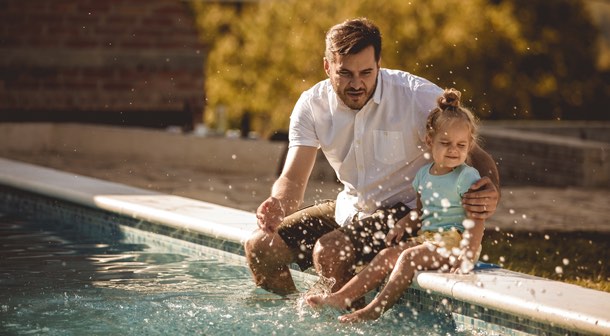
Pool Safety Tip #2: List Out Your Pool Do's and Don'ts
If you have a pool or hot tub at your home, part of your pool safety plan should include creating a set of family rules about how and when the pool may be used. Make sure everyone understands and follows your rules. Even if you talk about the rules, don't assume young children will follow them, so make sure they can't access the pool without an adult. Some water safety tips you might want to have in your pool safety plan include:
Do's:
- Make sure an adult is in charge of watching children swim, every time.
- Make sure you have parent approval before any child gets in the pool.
- Teach children to avoid pool drains.
- Store pool chemicals out of reach of children.
Don'ts:
- Never leave children unsupervised near a pool or hot tub.
- Never leave toys in or near a pool.
- Never let anyone swim if they are sick, nauseated, or have diarrhea.
Pool Safety Tip #3: Watch Out for Pool Drains
Pool drains use strong suction to filter the water in the pool, so it's best to teach children to stay away from them. While it's rare, there have been cases where children were held under water by the drain's force. To prevent accidental drownings, all pools are now required by law to have safety drain covers, but it's still a good idea to teach children to avoid them.
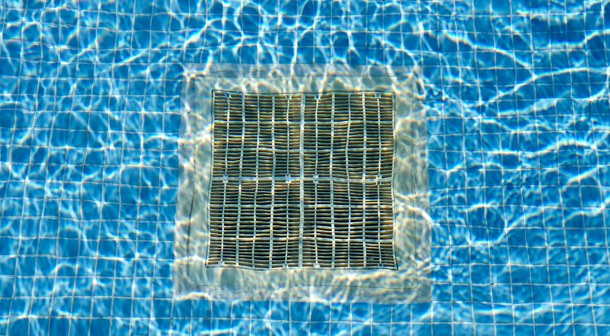
Year after year in Texas, most children who drown are at home, and backyard and apartment pools are the most common locations.
Pool Safety Tip #4: Pool Chemical Safety
Chemicals like chlorine that are used to kill germs in pools and hot tubs are very strong. Each year, around 4,500 people in the U.S. visit emergency rooms due to pool chemical injuries. More than one-third of these injuries are in children or teens. As part of your pool safety plan, make sure to store pool chemicals out of the reach of children. Wear gloves when handling pool chemicals and wash your hands afterward.
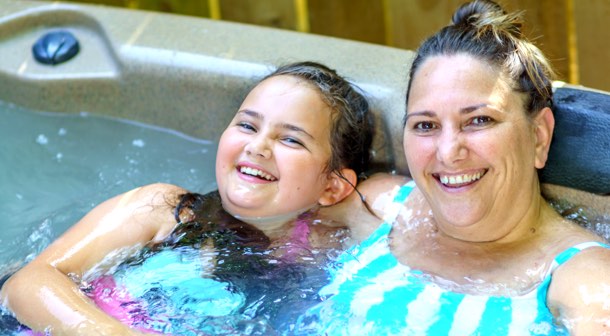
Pool Safety Tip #5: Safety Around Spas and Hot Tubs
While many adults like to relax in spas and hot tubs, they can be very dangerous for children because of the tub's depth and the high water temperature. In fact, the CDC doesn't recommend that children under 5 years use hot tubs.
If you do allow your child to be in a hot tub, experts recommend that you wait until he is tall enough so that his head is completely out of the water when he stands on the bottom. Even then, children should only be allowed in hot tubs for limited amounts time. Children suffer heat stroke more quickly than adults. Also:
- Always have an adult in the hot tub with your child.
- Remove the cover completely when you are using the hot tub - never just slide it part-way off.
- Always cover and lock the lid on hot tubs when not in use so that young children can't get into them.
Water can make for a lot of family fun, but the key is to be safe. Just remember that drownings are quick and silent. So constantly keep any eye on children in and around water.



